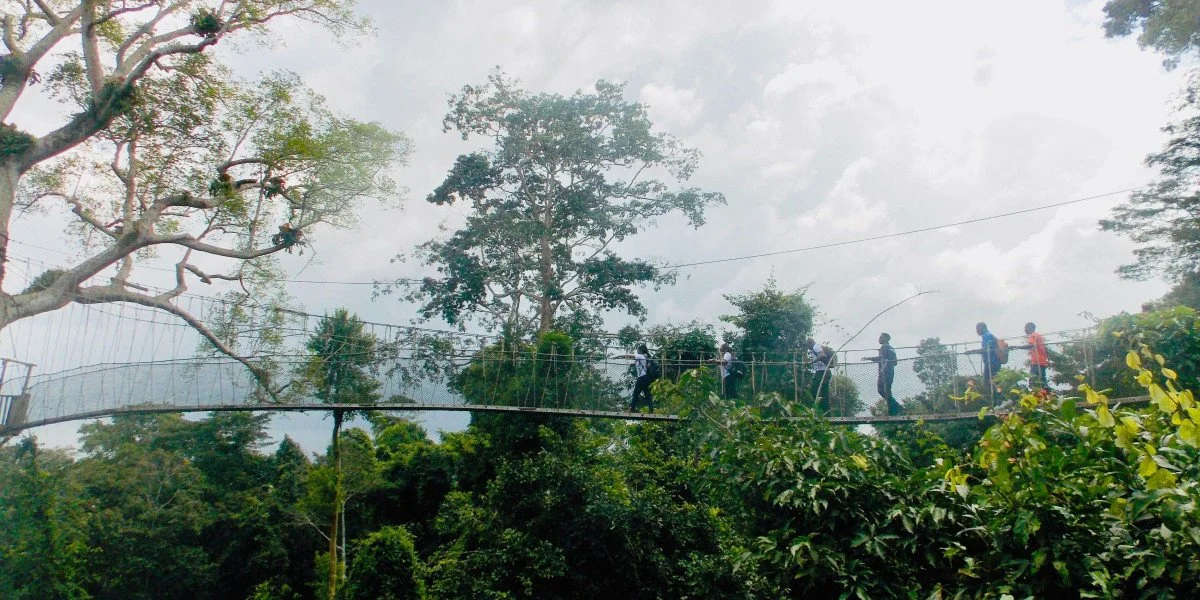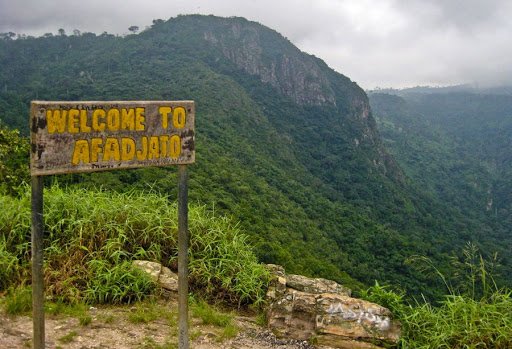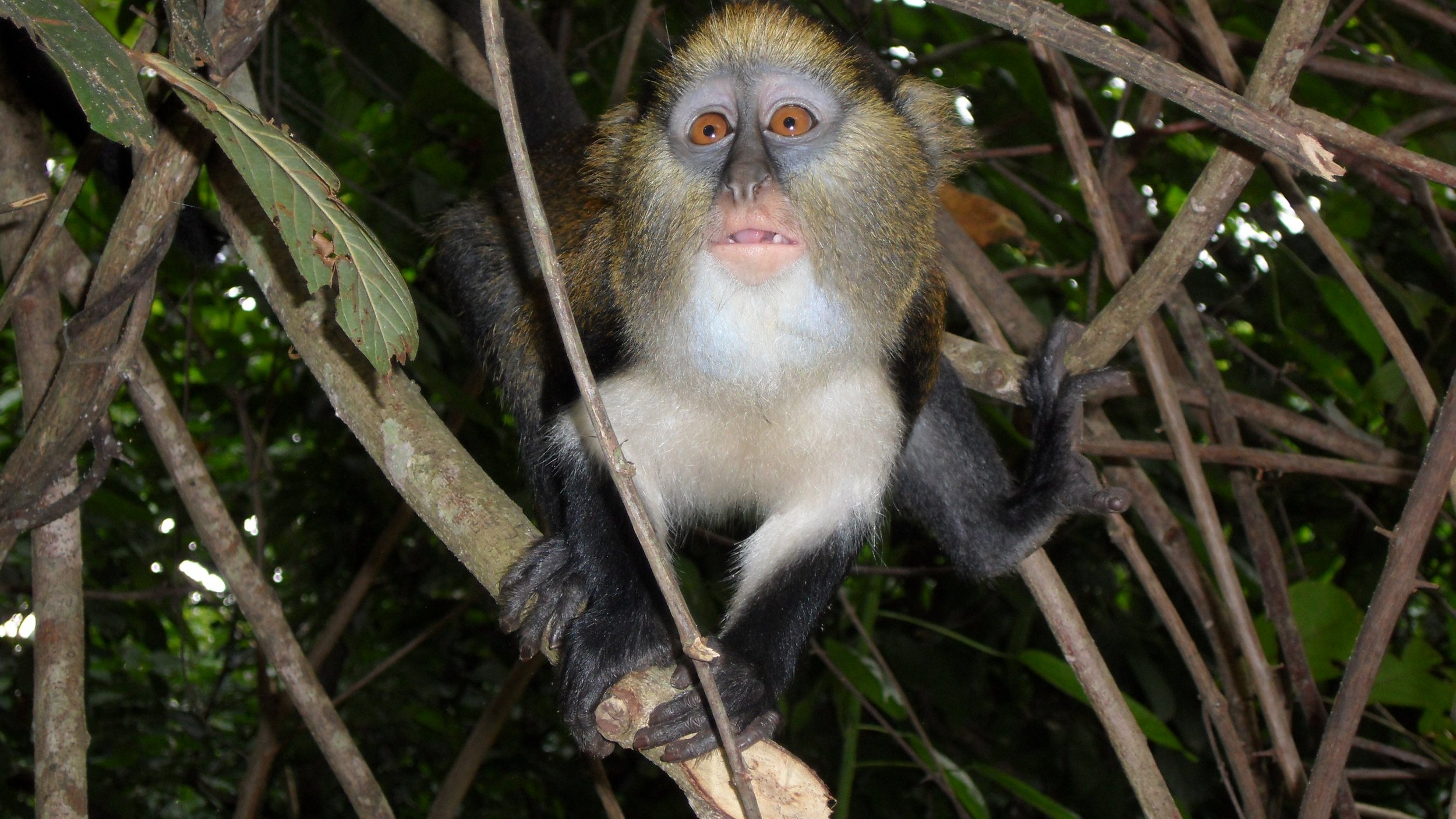A Tourist’s Guide to Ghana’s Nature and Wildlife: 5 Natural National Treasures to Visit
By Karel Mensah
Nature has a way of providing a much-needed reset to those who need it. There’s a guaranteed release from self-centeredness that you get from taking in some deep breaths on a trail lush with vegetation. Imagine the rustle of leaves beneath your feet, the fresh scent of wet earth filling your lungs and the serenade of exotic birds as your soundtrack. Nature can provide peace and healing for those in need of an escape from an ever-connected lifestyle. A visit to some or any of the places on this list will give you the opportunity to reconnect with your inner adventurer by allowing you to explore some of Ghana’s natural wonders.
1. Kakum National Park
The first thing that comes to any Ghanaian’s mind when they think of Kakum National Park is its canopy walkway. It’s actually very fascinating in theory. Seven treetops span the tropical forest and each one has a platform connected to the next treetop by a canopy walk. Kakum National Park is one of only three locations in Africa with a canopy walkway. It takes about forty-five minutes and a fairly courageous heart to complete the canopy walk. If you can find the courage you will be surprised at how encouraging the guides at Kakum can be.
Of course, the canopy walk is built for safety, and it’s also not the only attraction of the Kakum National Park even though it is the most prominent. In addition to the canopy walkway, there are multiple hiking trails of different skill levels available to visitors. The tour guides are amazingly knowledgeable about the history of the park and the cultural importance of various flora as well as the various animals at the park including the Diana Monkey, the African Elephant, the Grey Parrot and more.
Kakum National Park also provides a small museum that’s great for families, a reserved location for animal watching, several eating areas where you can eat some Ghanaian food, photography spots, a gift shop, and more. It’s a must-visit tourist destination for nature lovers visiting Ghana.
2. Mole National Park
Welcome to the largest national park in Ghana. If you came for the biodiversity (the plants and the animals) then Mole should be at the top spot of your travel plans. Mole has, in addition to over ninety other mammal species, the most viable elephant population in Ghana. This elephant population also happens to be non-aggressive. There are also over three hundred different bird species and various endangered animals. One of the activities on offer at Mole is going on a walking safari with an armed ranger.
Mole Park can be found in the Savannah region of northern Ghana and has the Levi and Mole rivers flowing seasonally through the park. There’s a small entrance fee to get into the park, but it’s well worth the visit. And of course, while you’re visiting Mole the motel has a restaurant attached where you can eat some local cuisine.
3. Mount Afadja/Afadjato
Afadja is one of the highest mountains in Ghana. The summit of Afadja is 885 meters above sea level so you know that it’s going to take some effort to get to the top. Afadja is located in the Volta Region of Ghana near Ghana’s border with Togo. Making the trip up to the Volta Region is also worth it because of the nearby attractions of the Tagbo and Wli waterfalls. That’s not to say Afadja alone is not worth the trip.
Of course, the most obvious thing to do when visiting Afadja is to make the trip up the mountain. It’s generally recommended that you take a guide if you’re going to climb the mountain and it can be a bit challenging seeing as it’s one of the tallest mountains in the country but the view from the top is definitely worth it, especially in clear weather. It’s definitely one for the Instagram feed.
Other than the climb up the mountain, you can also enjoy evening entertainment featuring performances like drumming and dancing as well as tours through the surrounding local villages.
The last thing that you should know about Afadjato is that Afadjato translates directly from Ewe to English as Mount Afadja, so technically saying Mount Afadjato is repeating mountain and that’s plain wrong.
4. Shai Hills Resource Reserve
The Shai Hills Resource Reserve is only eleven miles from Accra making it the closest wildlife reserve to the capital and the closest place on this list to the capital. If making the trip out of Accra proves to be too difficult then visiting the Shai Hills Resource Reserve is a viable choice to get in touch with Ghanaian nature and wildlife.
The Shai Hills Resource Reserve is chock full of interesting locations to make your trip worthwhile. You can visit the wildlife or bird-watching spots, go to the rock-climbing sights, take a nature walk, visit the historical sites available on the premises or even take a quad bike tour of the reserve. Shai Hills Resource Reserve has caves on location with historical importance for the Shai people. You can explore these caves as part of the tour experience.
Shai Hills Resource Reserve offers camping sites if you’re looking to stay overnight. It also offers a guest house with full amenities if you’re looking to spend the night but aren’t entirely comfortable being out in nature.
5. Boabeng Fiema Monkey Sanctuary
Boabeng and Fiema are two communities in the Nkoranza North District that have an unbelievable quality to them. In these communities, humans co-exist with monkeys and this tradition is passed on from one generation to the next. The people of these communities leave food outside for monkeys and even go so far as to have their spiritual leaders perform rites for monkeys who die complete with burials at the monkey cemetery.
The Boabeng Fiema Monkey Sanctuary has over 700 monkeys in a natural environment interacting freely with humans around. There are walk-through tours available with tourist guides who are knowledgeable about both the area and the monkey species. You’re allowed to interact freely with the monkeys and although only the guides are allowed to feed the monkeys, they might place some food in your hands so that you can get close to the monkeys for some time. That being said, food or no food, the monkeys are likely to come close to you during the tour of the sanctuary since they’re used to human presence.
If you’re someone who doesn’t mind interacting with the monkeys or who gets excited at the thought then you should definitely make the trip to the Boabeng Fiema Monkey Sanctuary. There are even certain trees that you’ll be allowed to climb on your visit to the Boabeng Fiema Monkey Sanctuary.







